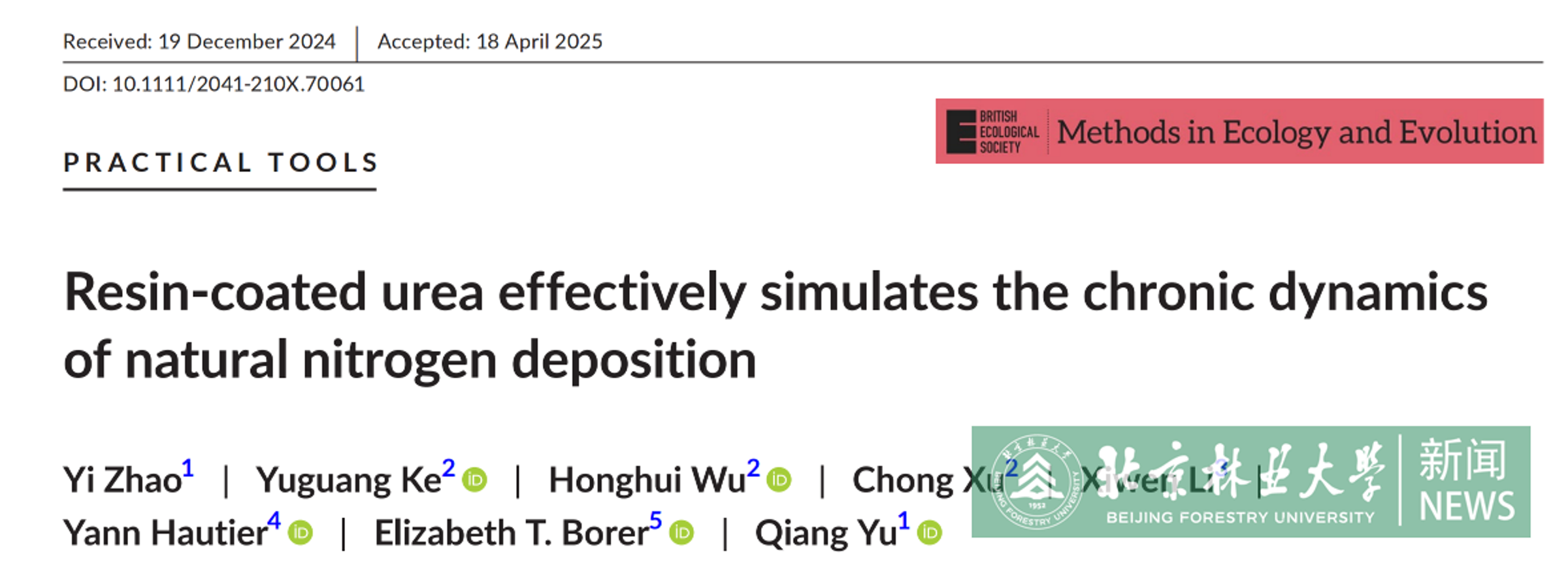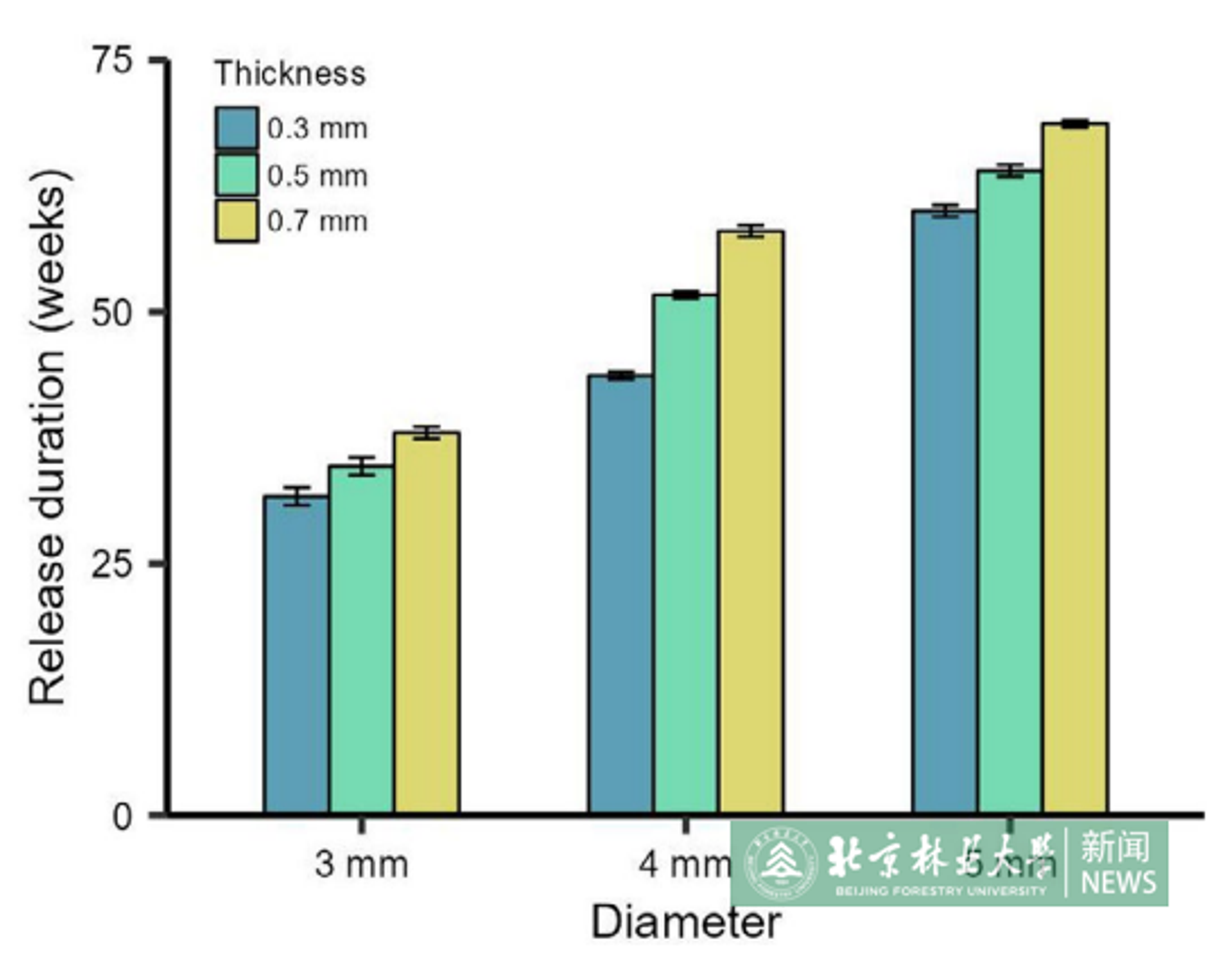Latest news
Master student Zhao Yi from Beijing Forestry University's School of Grassland Science has pioneered a novel approach to simulate natural nitrogen deposition patterns, published in the top ecology journal Methods in Ecology and Evolution. The study, titled "Resin-coated urea effectively simulates the chronic dynamics of natural nitrogen deposition", demonstrates that resin-coated slow-release urea outperforms traditional fertilizers in mimicking continuous atmospheric nitrogen deposition—a key breakthrough for ecosystem research.

Atmospheric nitrogen (N) deposition has more than tripled globally since the Industrial Revolution. Experiments usually simulate N deposition using fast-release N fertilizers applied once or several times a year. However, these pulses differ from the continuous N supply of natural deposition, which may lead to different outcomes. There is an urgent need for methodologies that more accurately replicate continuous N deposition to better understand its causal impacts on future biological outcomes.
The team developed a resin-coated slow-release urea to stimulate the continuous N deposition dynamics in semiarid grasslands. Three urea ball sizes with varying resin coating thicknesses were designed to achieve year-long release. We then compared the N release rate of the coated fertilizer to rate of natural N deposition to assess its effectiveness in replicating the temporal pattern of N deposition.


The results showed that under the semiarid conditions of our site, the resin-coated urea with a 0.5 mm coating on 4 mm diameter balls released urea continuously for approximately 12 months. The temporal pattern of N release rate of the fertilizer was very similar to local atmospheric N deposition. There was a strong positive relationship between N release rates and N deposition (R2 = 0.80), with both exhibiting simultaneous peaks and valleys.
The results indicate that resin-coated urea with a pellet size and coating thickness determined by local site conditions can effectively simulate the temporal dynamics of N deposition. Coated urea provides a far more effective approach for experimentally simulating future impacts of elevated N deposition on ecosystem function and processes compared to fast-release fertilizers.
Zhao Yi is the first author of the paper, with Professor Yu Qiang as the corresponding author. This study was financially supported by National Key R&D Program of China (2022YFF1300603, 2022YFE0128000), National Natural Science Foundation of China (32061123005, 32171592) and Scientific and Technological Innovation Project of China Academy of Chinese Medical Sciences (CI2024C003YN).
Paper link: https://besjournals.onlinelibrary.wiley.com/doi/10.1111/2041-210X.70061
Written by Zhao Yi
Translated and edited by Song He
Reviewed by Yu Yangyang










